Why you can trust TechRadar
With its slide-out QWERTY keyboard and resistive touchscreen, the Nokia C6 is like a lower-end N900.
The touchscreen/keyboard design is shared with Sony Ericsson Vivaz Pro too, which also features the Symbian operating system.
At 113.4 x 53 x 16.8mm, the C6 isn't too large for a smartphone, but its thickness means it ultimately comes across as feeling larger than something like the iPhone 4 or HTC Desire in your pocket, despite their bigger screens.

Packing in the keyboard and big screen obviously contributes to this thickness, and to the weight as well. At 150g, it's slightly heavier than many smartphones, and quite a lot heavier than your average feature phone.
The flipside of this weight is that the C6's build materials feel sturdy. It's a good 30g heavier than the Sony Ericsson Vivaz Pro, but considering the problems we had with the build quality on that phone, this extra weight is well-used.
Having said that, though, we're actually not entirely convinced by the build quality of the C6. As we said, the materials feel sturdy, but our problem is in the joins.

The screen wobbles slightly on its hinge side to side, even before you properly slide it. It also clicks slightly down into the rear half of the body. This isn't surprising considering how large the gap between the screen and the other half of the phone is – you can see plenty of daylight through it.
Similarly, the battery cover doesn't quite sit snugly. It's only a tiny wobble, but it's there, it's noticeable and it's noisy.
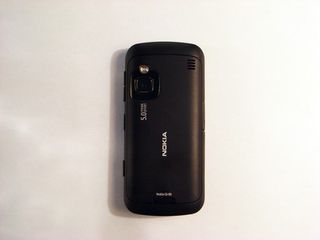
Neither of these niggles appears major – they didn't break during our review period or anything – but they're the two parts you grip when you pick up the the phone up, so it can feel as though the whole thing is shifting slightly in your hand.
Compared to the Sony Ericsson Zylo, which was a far cheaper slider but didn't even twitch until you pushed it up purposefully, the quality of this part of the C6 was a bit disappointing.
The actual build material is matte plastic, and feels nice and grippy under your fingers. The only difference is the front, which has a shiny hard coating over and around the resistive 3.2-inch touchscreen.
The screen is 640 x 360 (or nHD, in Nokia parlance), and displays colours with an appealing natural look that particularly suits photos. It's also capable of rendering clear, readable text, even at small sizes.

Beneath the screen are three buttons, a call button on the left, a central key that brings up the main menu without quitting your current application (making use of the background apps that Symbian S60 is capable of), and a terminate button on the right, doubling for the power switch.
All three of these are backlit, with the central one 'breathing' on and off when the phone is in sleep mode, which can be annoying if you keep the phone by your bed at night.
On the right-hand side of the C6 are some handy physical buttons that are totally unmarked, though regular smartphone users will recognise them easily enough. At the top you have a volume rocker, with a slider that locks and unlocks the phone underneath.
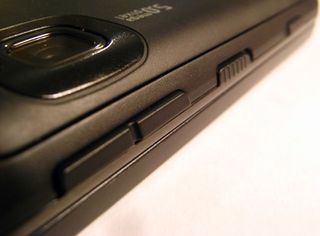
Near the bottom is a lone, unmarked key that can be pressed either halfway (causing a light clicking sound) or all the way down – yes, it's a camera shutter. Pressing it all the way will launch the camera app immediately.
The lack of labelling on these buttons would contribute to a very cool stealth fighter-type look for the phone, were it not for the Nokia branding elsewhere. Seeing as the mystique was already ruined, some labelling on these wouldn't have gone amiss, Nokia.
On the left side of the phone is the flap covering the microSD card slot. A 2GB card is included, but it can take up to 16GB (although we didn't test it with a 32GB option).
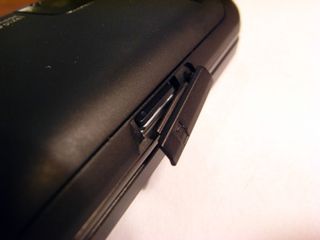
On the bottom of the phone is the tiny Nokia charging port, while the top features a flap-covered micro-USB connector and the 3.5mm audio jack.
Turn it to the left and slide up the screen – in quite a sudden movement, rather than a smooth motion – and you'll reveal the QWERTY keyboard. It's backlit, and features space for quite a few punctuation marks and symbols to be immediately available. Even more are on offer using the Function key and orange secondary digits/symbols on some of the keys.
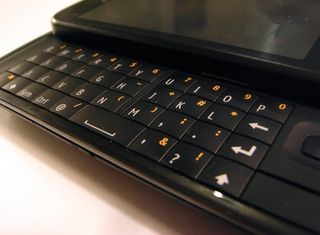
There's also a navigation D-pad to the left of the keyboard, and a select button in the centre of that.

For full details on how the keyboard performs, see the Messaging section of the review, but we will say that its build quality is excellent. The keys are matte, like most of the C6's body, and have a short travel that's solid and has a small click to it to give you feedback.
With the screen slid out, the little wobble of the hinge actually disappears, so the C6 feels more solid when it's open, oddly enough.
On the C6's rear is the 5MP camera and LED flash.
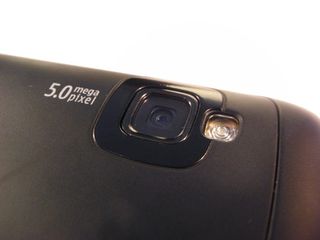
The battery cover is removed by pulling down on a little catch and then prising the cover off. It's requires two-handed coordination (and some nails) and is quite fiddly on your first few efforts.

Underneath it is the battery, which has to be removed before you can add or remove your SIM card.

A key Apple app is rumored to be getting a major upgrade in macOS 15

Intel's formidable 288 core CPU now has a proper family name — Granite Rapids and Sierra Forest are Xeon 6 processors but is it just becoming too confusing?

Get six months of Disney+, Hulu, and ESPN+ free at Verizon with this epic deal
